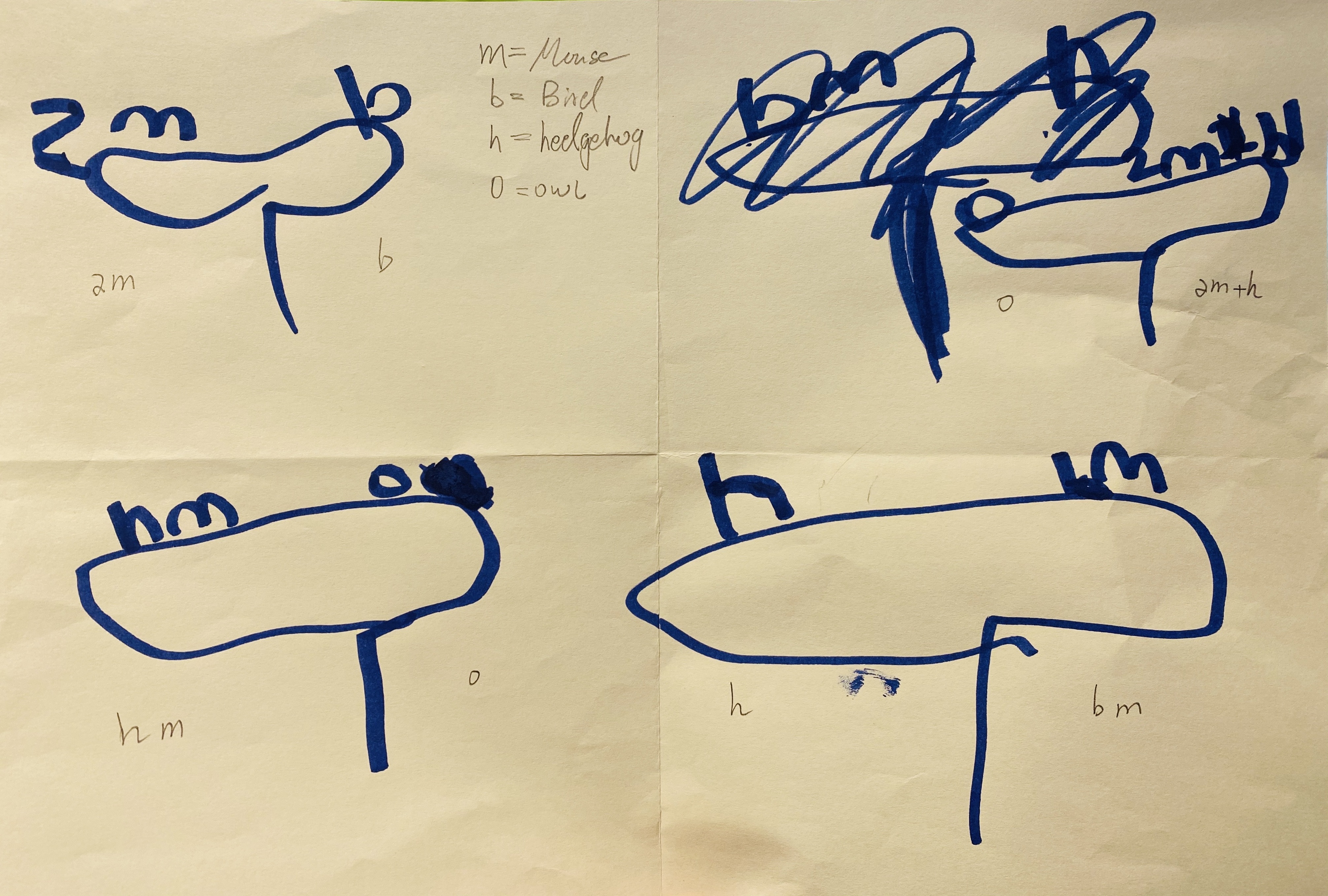Or search by topic
Number and algebra
Geometry and measure
Probability and statistics
Working mathematically
Advanced mathematics
For younger learners
Seesaw Shenanigans



- Problem
- Getting Started
- Student Solutions
- Teachers' Resources
Mia from King's College School in the UK started off by balancing the same animal on both sides of the seesaw, but later she found that she could balance the seesaw by putting different animals on each side. She drew some pictures and used letters to represent each type of animal on the seesaw:

Well done Mia! The top right picture actually shows an owl on the left and two mice and a bird on the right, which would make the seesaw balance.
Vinnie from the UK says:
The mouse weighs 1. The robin weighs twice as much as the owl, which is 2. That means 2 mice on one side and one robin on the other side will balance. The porcupine (hedgehog) weighs 3. That means that a porcupine on one side (3) will balance with a mouse and a robin on the other side (2+1=3). The owl weighs 4. One owl can balance with a porcupine and a mouse (3+1=4) or with 2 robins (2+2=4)
Thank you for that clear explanation Vinnie. Have a look at Vinnie's ideas - why has he decided that the mouse weighs 1?
Vinnie and Mia each found four solutions, but some of their solutions are different. Can you see which ones are different? If you think you've found all the ways of balancing the seesaw, we'd love to hear about it. Please email us with your ideas.
You may also like
Measure for Measure
This article, written for students, looks at how some measuring units and devices were developed.

